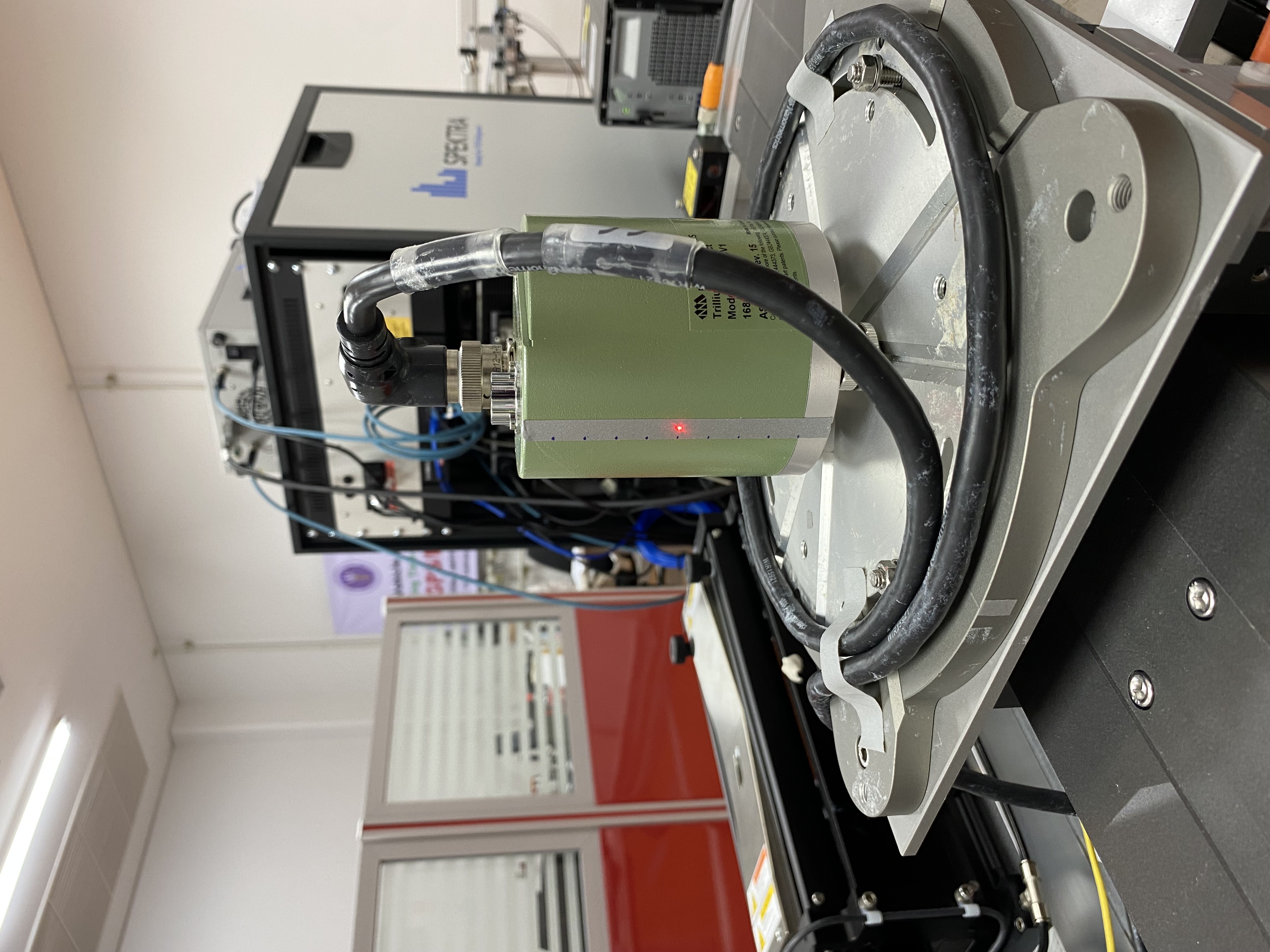Back
Factors Influencing the Primary Calibration of Seismic Velocity Sensors.
การศึกษาปัจจัยที่ส่งผลกระทบต่อระบบสอบเทียบเครื่องวัดแผ่นดินไหว
@วิทยาลัยวิศวกรรมสังคีต
#KLLC 2024
#Industry 4.0

Details
Earthquakes are among the most significant natural disasters, presenting considerable risks to both human life and property. The ability to accurately determine the location and amplitude of seismic waves is crucial for managing the potential impact. Therefore, seismometer should be calibrated to determine its sensitivity and performance. However, calibration involves uncertainties arising from the instrument itself and the measurement process. This project focuses to determine uncertainties resulting from various parameters, including reference measurement position, seismometer adapter, and sensor orientation. The experiments were conducted in two parts. The first part is to assess the effects of adapter insertion and changes in reference measurement position using a laser as a standard reference tool. The second part studied the impact of sensor orientation to understand the effects of seismometer misalignment. As a result, the sensitivity values obtained when installing adapters and not installing them exhibit similar characteristics. For vibration amplitudes lower than 1 mm/s, the measured seismometer sensitivities vary slightly from the nominal sensitivity at frequencies between 0.16 Hz and 10 Hz. At frequencies higher than 10 Hz, the deviation is noticeably increased, varying according to the reference measurement position. Furthermore, misalignment of sensor orientation affects sensitivity across all frequency ranges.
Objective
หัววัดแผ่นดินไหว (Seismometer) ถูกใช้ทั่วโลกสำหรับการตรวจจับเหตุการณ์แผ่นดินไหว ซึ่งการสอบเทียบหัววัดแผ่นดินไหว จะทำให้เราทราบถึงความแม่นยำและประสิทธิภาพของเครื่องมือได้ โดยหัววัดแผ่นดินไหวส่วนมากได้รับการสอบเทียบโดยใช้วิธีการสอบเทียบทางไฟฟ้า (electrical calibration) ซึ่งใช้แรงแม่เหล็กไฟฟ้า (Electromagnetic force) เพื่อทำให้มวล (Seismic mass) เกิดการสั่นโดยการใช้สัญญาณไฟฟ้า แต่การสอบเทียบโดยวิธีนี้ยังไม่สามารถให้ผลที่แม่นยำมากพอ ซึ่งการสอบเทียบเชิงกล (mechanical calibration) จะถูกทำขึ้นในLabที่มีการควบคุมปัจจัยด้านการสั่นสะเทือนภายนอกรวมถึงการควบคุมอุณหภูมิ และมีการอ้างอิงจากสถานการณ์จริง ทำให้ผลสอบเทียบมีความน่าเชื่อถือและแม่นยำมากกว่า แต่ในการสอบเทียบนั้น ยังคงมีค่าความไม่แน่นอน(Uncertainty) ที่เกิดขึ้นจากเครื่องมือและการวัด เราจึงต้องการหาค่าความไวของการวัด(Sensitivity)และความไม่แน่นอนที่เกิดขึ้นจากปัจจัยต่างๆ
Project Members
โศภิษฐา ชาญสตบุตร
SOPITTHA CHANSATABUTR
#นักศึกษา
Member
ปรัชญานนท์ สังข์อ่อง
PRATCHYANON SANGONG
#นักศึกษา
Member
สรศักดิ์ ด่านวรพงศ์
Sorasak Danworaphong
#อาจารย์
Advisor
Vote for this Innovation!
Loading...
Powered By KMITL Innovation Project